Celebrating Earth's Birthday with my son
Plus: Miyazaki movie magic, and other resources on reciprocity
My partner and I have been slowly making our way through the Hayao Miyazaki catalogue of magical cartoon films with our son. We finished “Ponyo” (2008) last night, and “My Neighbor Totoro” (1988) has blissfully supplanted our son’s regular diet of Lego-assembly videos on YouTube. While some elements of these older films haven’t aged well (such as Satsuke’s faux-Indian pantomime in the first five minutes of “Totoro”), their magical realism and realistic depictions of childhood dialogue is far preferable, to me, to the violence- and sexism-infused movies of today. And their thoughtful ecological sensibility manages to feel both timeless and ahead of its time.
It would have meant so much to me to view Studio Ghibli’s films when I was a child, growing up in rural surrounds not so different from the Japanese countryside depicted in these films. They would have affirmed my intuition that there are spirits great and small standing guard over us and our earth, from the tiniest “trolls” of the forest in “Totoro” to the great Goddess of Mercy and her sometime-consort, the Bowie-esque wizard Fujimoto, in “Ponyo.” That is what I want for my son.
Today is Earth Day, so I am thinking a lot about how we are fostering a sense of respect and reciprocity with regards to our environment, as well as to other living beings.
My posts recently have centered on this value of reciprocity above all, and what happens when we as humans fall out of balance with the ones who tend us, and with the figurative gardens of mindfulness and creativity inside of us that only we can tend.
In particular, I’ve been exploring the notion that framing resting and activity, researching complex issues and taking action, or receiving fair compensation and providing selfless care, as forever existing in opposition — or those who engage in both as hypocritical or uncaring — isn’t helpful to the long-term project of tending our world. Theorists like Paolo Freire would hold that in fact, these inhales and exhales of existence are how we build a more durable network of care, one that doesn’t depend on saviorism or martyrdom, but solidarity between equals, who all have a role to play in protecting the whole.
Over time, through rhythms of rupture and repair, through contractions of pain and peace, through the embrace of both the dark night of uncertainty and the bright clarity of morning: this is how life on earth slowly evolves, and us along with it.
To that end, I’m re-sharing an excerpt of a post from last year, in which I told my son “The Story of the Earth” as a bedtime tale. Below that, I’m closing this series with a shortlist of “further reading” links in lieu of my typical extensive resource guide, on what it means to live in reciprocity with each other and our sacred world.
In the meantime, I’m off to take my son to Central Park for the day. May you enjoy a meaningful Earth Day, wherever you are. I hope it comes with cake, and sprinkles.
The Story of the Earth
In the beginning, it was dark. There are many names for the dark. I think of it as The Great Mystery. All was black, and then – boom! Out came the suns, and the planets, and the moons, and the asteroids. All went flying, in all directions.
Eventually, our Earth found her place near the sun. She gathered close to it with the other planets, like a family sitting around a campfire. Mercury, Venus, Mars, Jupiter, Saturn, Uranus, Neptune.
At first, all that you could see on her surface was water, black and shimmering, as in the Great Mystery. But she had fire in her, too. It rose up above the water and cooled into land. The continents emerged. And soon, from the place where fire and water and earth met, life emerged too.
First it was just one little germ. And then a bigger germ. And then a water bug, a jellyfish, a shark.
The animals in the water became curious about the land. They grew legs so that they could explore. Giant plants grew on the land, and the animals ate them. The animals grew tall and became the dinosaurs.
The earth was so proud. She had created such beauty. She loved her creations.
But then – boom! An asteroid that had been careering through space since the first boom created another one.
Why? We will never know. That is the way of the Great Mystery.
What we do know is that instead of new things coming out, her creations disappeared into the black space created by the boom, and more blackness rose up, shrouding her from the sun.
(Did the asteroid say sorry? My son always wants to know.)
Perhaps it was very sorry. Perhaps it cried alongside her. Perhaps it didn’t even notice her as it went flying off in a new direction.
In any case, the Earth was forever changed. Her teeming waters and tropical forests were covered in sheets of ice. She spun silently, alone and cold, for quite some time.
But then, another quiet boom emerged, from the deepest, darkest part of her – the place where fire met water and became land. Life was asking to return.
What should she do? She had every reason not to try again. But she thought of how much she had loved her first creations. And she decided to hope.
Once again, she welcomed and nurtured new little things, which became big things. The big things became curious, and they grew legs to walk upon the land again. But the land was still very cold, so they needed not only to grow legs but coats to keep them warm. Some grew feathers and became birds. Some grew fur and became the little chipmunks and other small creatures we love, and later, the monkeys. And the monkeys ate the leaves from the new trees and grew tall, though not as tall as the dinosaurs before.
The monkeys came down from the trees and began to explore the land. They became curious about the water, and how it could teach them about change. They became curious about the land, and how it could be shaped and worked to create a home for them. They became curious about fire, and how it could both take and give life. They made a practice of gathering around it, as their mother had once done, when she found her place near the sun. Here, they made many different creations, just like their Mother. They made dance. They made art. They made song. They made tools. They made cakes!
Somewhere along the way, in their thinking and making, these curious monkeys became what we think of as human.
The humans asked themselves what they should do with all of these creations. They thought about their Mother and all she had done for them. They decided that the best way to celebrate her was to throw her a party. A thank you party for their mother, who had been through so much, and who still loved them, after all these years. With dancing, and art, and songs. And cake!
(A cake with sprinkles, my son always adds. Yes, with sprinkles, I always say. And then he’ll say, The End.)
The stories mothers tell in order to live
After a few nights of making and remaking this story, I realized that I was telling it to remind myself that I’m not alone. I was telling the story of how I have healed, after losing my son’s sister-to-be in late pregnancy. About how I came back to life again, for my family.
I also realized that in a way, I have been telling the story of my own mother, who lost a son to stillbirth before me, and about how I am here because she and my father did their best to come back to life. Of my grandmother Marion, who was born after two stillbirths, ten years apart from her older sister. Of her mother, Evelyn, a shy and anxious woman who had every reason not to try again, and who still did. Of my grandmother’s grandmother, Rozilla, who supported her family through her work as a poet and teacher after losing her father to an untimely death. Of Rozilla’s mother, Harriet, who married that man, as did Harriet’s two sisters, when they were orphaned in their teens.
I am also telling the story of the Indigenous and Black people who were displaced and disenfranchised by the devastation my ancestors brought to their lands, which I wrote about here. I am telling the story of the people who have survived and perpetrated cataclysmic life-ending collisions with one another, around the world. The continued resilience and survival of their descendants is also the story of the earth. A story big enough for all of us to live inside.
Further reading on balance and reciprocity
On understanding how our liberation is bound up in the health of the earth:
writes a must-read column, with beautiful and moving imagery, on a variety of social justice topics. This week she wrote, with tongue in cheek, about a serious issue she calls “SPERMAGEDDON!” As she notes: “The prevalence of endocrine-disrupting hormones in our environment is very much a reproductive justice issue! As infertility rates continue to rise and more and more people require assistive reproductive technology, human reproduction may soon be reserved for those who can afford medical intervention. True reproductive freedom means everyone has access to the medical care necessary to create the family they desire. Big changes are needed if we’re going to solve this crisis before it’s too late.” As we approach May, a month during which many of us in the Complicated Mother’s Day Club will be absolutely tortured by images and sentiments that feel out of reach for us — and as the battle over IVF access rages on, alarmingly, in the U.S. — this feels like a very timely topic to take on.On self-tending for tired tenders:
, author of the brilliant “Real Self Care,” recently shared this insightful advice column, which addresses the challenges of “the panini generation” (those of us who are pressed between parenting young children while caring for elders). She normalizes how hard it is for someone in this position to access rest, explaining “We live a culture that takes the back-breaking work of caregiving for granted. Not only is domestic labor unpaid— it’s minimized, belittled, and systemically devalued.” Her full take is full of more useful insights and tips.On the tensions between creative achievement and caring for children: I can’t stop thinking about this entire essay by
— a must-read for any parent who is also trying to make art and make a living. One line of many that stood out: “I see how limited the path of achievement is. How it can only ever lead to more achievement and more and more, and your child’s face recedes, recedes, and your happiness depends entirely on the whims of people with more status, more achievement, than you.”On the need to scale back to move forward: I’ve often thought about writing about the metaphorical resonance of pruning, but
has done such a bang-up job of this here that now I don’t have to. In an essay that braids together themes like self-determination, setting boundaries, and grieving the directions our lives cannot take if we want them to grow in other ways, Robin writes: “You cannot transplant a tree without cutting back on its upper growth, otherwise it will run out of resources to regrow roots and establish itself. Simply put, you can’t take it (all) with you. Nobody can uproot themselves and expect to keep every branch and leaf at full force.” I am wishing you a quiet moment on this Earth Day to read the piece in its entirety.

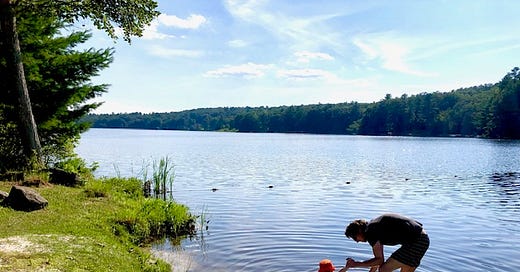


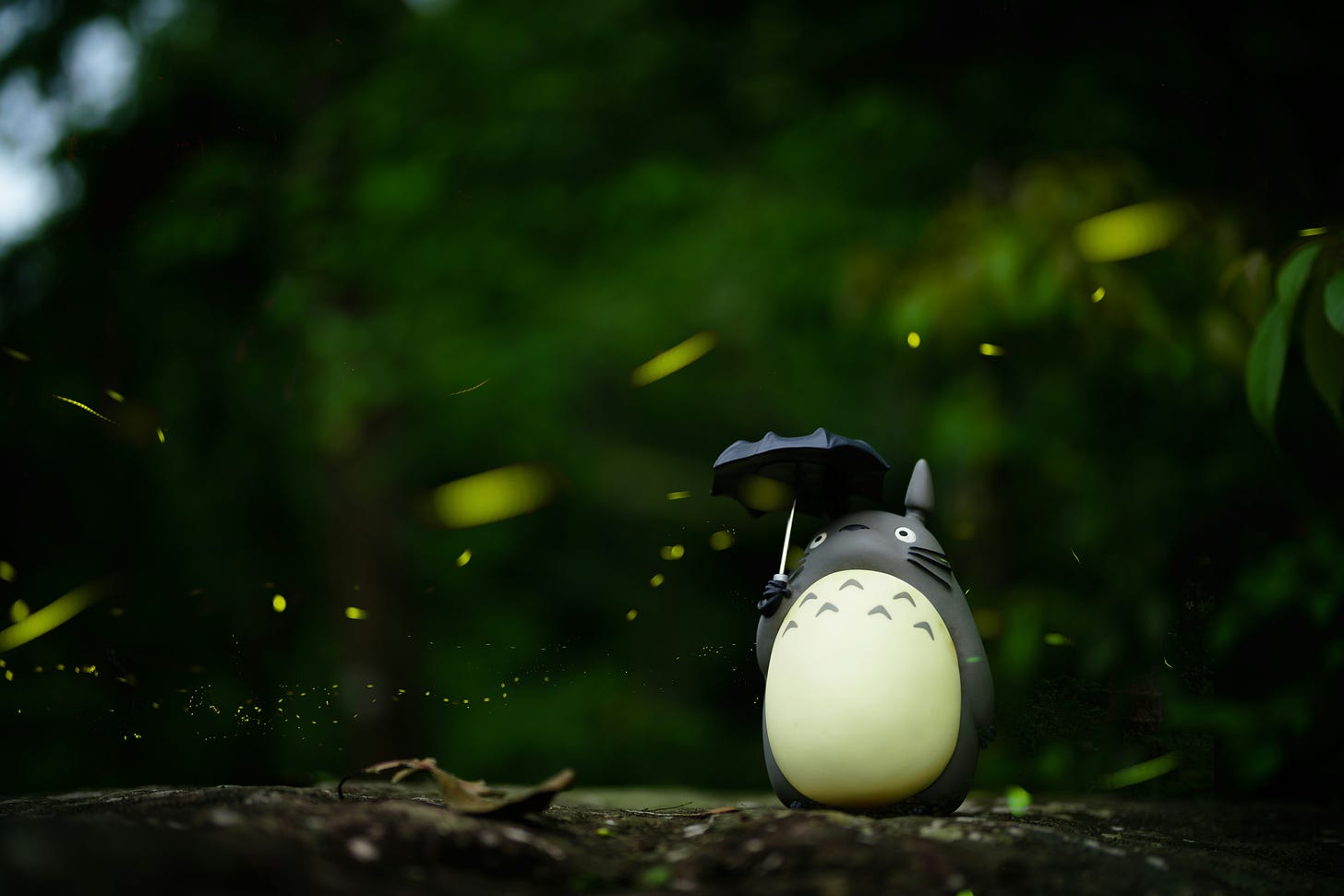
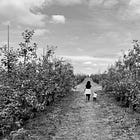
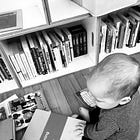
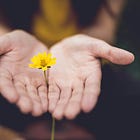


Thank you for sharing!
I loved this story. Especially the crashing parts. Maybe one of us should write an entire post about collisions and their results. I can see some inspiration in that.
And also thanks for the shout! I love how easy it is for us to lift one another up on this platform.